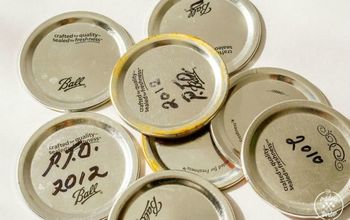How do I lay a ceramic tile insert on the floor?
I want to replace a small area in the living room floor with ceramic tile. Have never worked with tile before
Related Discussions
How can I update old 1X1 inch bathroom floor tiles?
I hav very old tiny ceramic tiles. I want to update them without having to do the hard work of removing them. A stencil sounds great but every time I see it it’s on... See more
I'm laying a tile floor..do i start in the middle of the floor?
Can you lay bamboo flooring over ceramic tile floor
Can I lay premium vinyl flooring over a tile floor?
My tile is old cracked and chiped and I want to cover it with the vinyl not linoleum
How can I hide grout lines in my ceramic tile floor?
I'd like to put vinyl tile or sheet vinyl over the ceramic.
How can I lighten ceramic floor tiles?
My kitchen floor ceramic tiles are dark and darken the whole room. I dont feel like taking them off and I wonder if there quick and non invasive way to lighten up my ... See more
How do I cover up small nicks in my ceramic tile in kitchen?
Due to dropping various things on the ceramic tile floor in my kitchen, I have quite a few small nicks and one larger one - want to find something to cover them up, c... See more



Wood floor...use tile mastic to adhere the tile directly on the floor.
Concrete floor...use thinset mortar to adhere the tile to the floor.
Then grout all the joints. Use transition molding around the perimeter of the tile.
Laying tile
https://www.youtube.com/watch?v=ZOczr9WCVig
https://www.youtube.com/watch?v=A9xb7cMa51k
Transition molding
https://www.google.com/search?q=transition+molding&source=lnms&tbm=isch&sa=X&ved=0ahUKEwjCk5DbkM3fAhUNUK0KHYXiCkIQ_AUIDygC&biw=1536&bih=740
Hi Kitty, this is instruction for making them flush
https://www.youtube.com/watch?v=ZIBWRRBft8g
Do you have carpet or vinyl or hardwood now?
What will you do for something like a cut edge on carpet or vinyl? There’s all kind of reducer strips and threshold strips.
Starting with the Planning:
When you cut out the area you’re removing, there’s going to be some kind of substrate on top of the floor joists, that may have to be built/up or removed, depending on the following math:
1.) New floor thickness = tile thickness + thin-set thickness (3/16”) + cementicious tile backer board (1/4”?).
2.) Old floor thickness = finished flooring thickness + pad/underlayment thickness.
3.) Those two calcs should equate. If not, then you’ll need to shim one or the other.
To avoid renting a tile saw and making cuts, buy a tile size that’s going to work with your layout/design. Avoid highly polished tiles, as they will be slippery.
Grout is always the source of maintenance problems and therefore, buy non-sanded grout and use 1/8” grout joints or smaller. I use pennies for spacers, but spacers are cheap and plastic, so they don’t get stuck.
The directions are on the package.
There are tiles made perfectly true that are not to be grouted, but they’re rately at common DIY stores.
Buy 10% extra tile and buy the same “manufacturing date/lot number” so that the finish colors match exactly.
I would avoid light and contrasting grout colors for one’s first project.
The thinset or mastic is to be applied per the manufacturer’s specs.
Mastic off-gasses which is not healthy in the winter- so don’t use mastic now.
The backer board must be screwed down with their spec’d coated screws, to the floor joists or solid subfloor.
The backer board can only be cut outside and the store will not cut it for you, they can’t.
Therefore, design your tile layout on the sizes of the pieces of backer board. Typically 3’x5’. More planning. I’d use graph paper, if the design is complicated.
Double masking-off all existing areas is critical. Lots of rags, sponges, buckets of clean water, rubber gloves and wood popsicle sticks ahould be there. I avoid metal tools as the thinset & grout are a bit caustic.
It’s a messy project and mixing the powdered thinset and grout should be done in the garage, as the dust is unhealthy.
This is at least a 3-4 day project and personally, I’d wait until late Spring, unless it’s just you occupying the space.
You can certainly Plan now, purchase the materials now and pry up the existing flooring in a corner or a closet, to work on “the math” for the flooring heights.
If you mean cut part of the floor you need a reciprocating saw